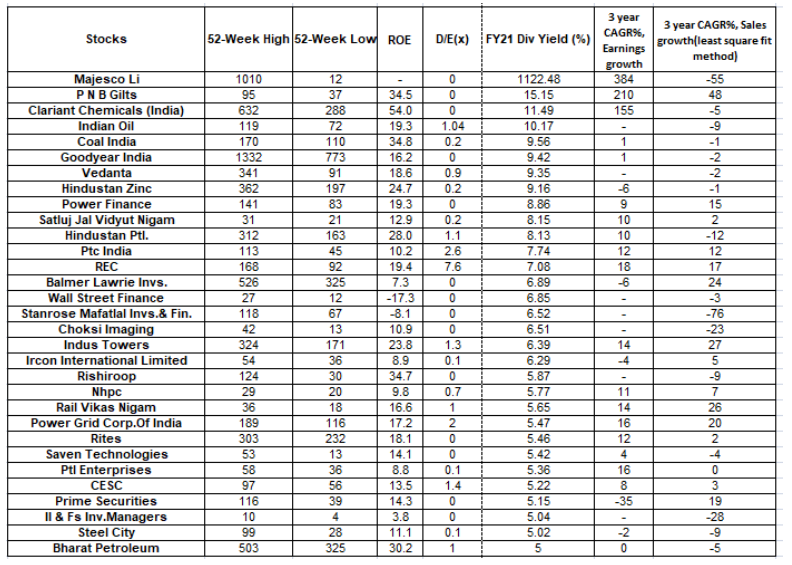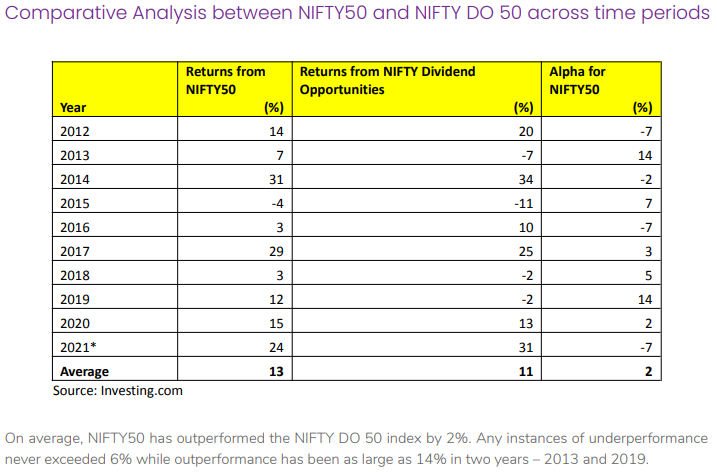Are high dividend stocks worth chasing?
Dividend yield as a financial metric assesses dividend payout and allows a comparison with payout on other stocks.

Fixed deposits cannot fetch you more than 6% in returns. The Reserve Bank of India and other central banks worldwide have cut the rates to help the economy sustain and rebound from the pandemic-induced shock. Investors willing to take a little higher risk have moved to Dalal Street to earn higher returns, beat inflation, and create wealth. The numbers say it all.
Total accounts at CDSL have doubled in just a year. But times are hard for fixed-income investors. While on one side, inflation is higher, fixed deposits yield lower returns on the other. Investors who want regular income and are comfortable with the volatility and risk are now turning toward high dividend yield stocks during this period. They provide both passive income and stable growth in the long run.
Some investors find dividend investing to be boring. Are you too of the same opinion? Certainly, these stocks lack the adrenaline rush that the markets are usually known for because one invests for slow, steady payments in more mature companies. It is essential to understand whether dividend investing is helpful or not. What the history says as far as returns are concerned.
According to William O’Neil India, there are advantages and disadvantages that you need to understand before you invest for dividend income. “Dividends are never guaranteed and you have to rely on the previous trend. Companies can and do change them at will. Also, larger, more mature companies are usually the ones that pay out dividends. In India, mostly public sector companies pay higher dividends,” the financial services firm said.
Top Dividend paying stocks in India

Source: William O’Neil India
Is it worth chasing dividend yield?
An age-old saying goes “a bird in hand is better than two in the bush.” In investing, this describes an investor’s preference for dividends (the bird in hand) relative to future price appreciation (two in the bush). In the words of John D. Rockefeller: “The only thing that gives me pleasure is to see my dividend coming in.”
Dividend yield as a financial metric assesses dividend payout and allows a comparison with payout on other stocks. Yield as a concept can be used to compare the risks and benefits of investing in any asset class. Similarly dividend yield in equities, an investor can assess a bond’s yield to maturity (YTM) to understand the return that can be expected from the instrument. However, while bonds are fixed-income instruments, equities are riskier. “Rather than focusing on dividend yield, an investor in equities should focus on total return on equity (ROE), which comprises dividends as well as the major portion of returns coming in price returns,” William O’Neil said.
Investment guru Benjamin Graham had popularised dividend yield as a stock-picking strategy. Over the past few decades, several mechanical strategies have been developed on the concept of dividend yield. “We analysed returns from the Nifty 50 and Nifty Dividend Opportunities 50 index over the past decade. We found that in terms of returns, Nifty outperformed the latter index 60% of the times, on an annual basis,” William O’Neil said in a report.

Download Money9 App for the latest updates on Personal Finance.
Related
- देश का विदेशी मुद्रा भंडार 4.47 अरब डॉलर घटकर 688.1 अरब डॉलर पर
- मौद्रिक नीति पर निर्णय से पहले सेंसेक्स 308 अंक टूटा, निफ्टी भी नुकसान में
- जी एंटरटेनमेंट के शेयरधारकों ने प्रवर्तक संस्थाओं से 2,237.44 करोड़ जुटाने के प्रस्ताव को किया खारिज
- 15 जुलाई तक मक्का, धान की फसलों का बीमा कराएं किसान: हमीरपुर जिला अधिकारी
- सेंसेक्स की शीर्ष 10 कंपनियों में से नौ का बाजार पूंजीकरण 2.34 लाख करोड़ रुपये बढ़ा
- नेस्ले इंडिया के निदेशक मंडल के 1:1 बोनस शेयर जारी करने को दी मंजूरी दी

